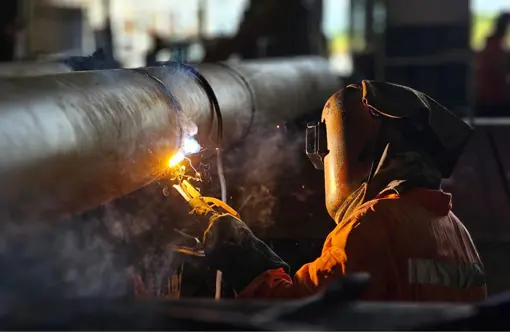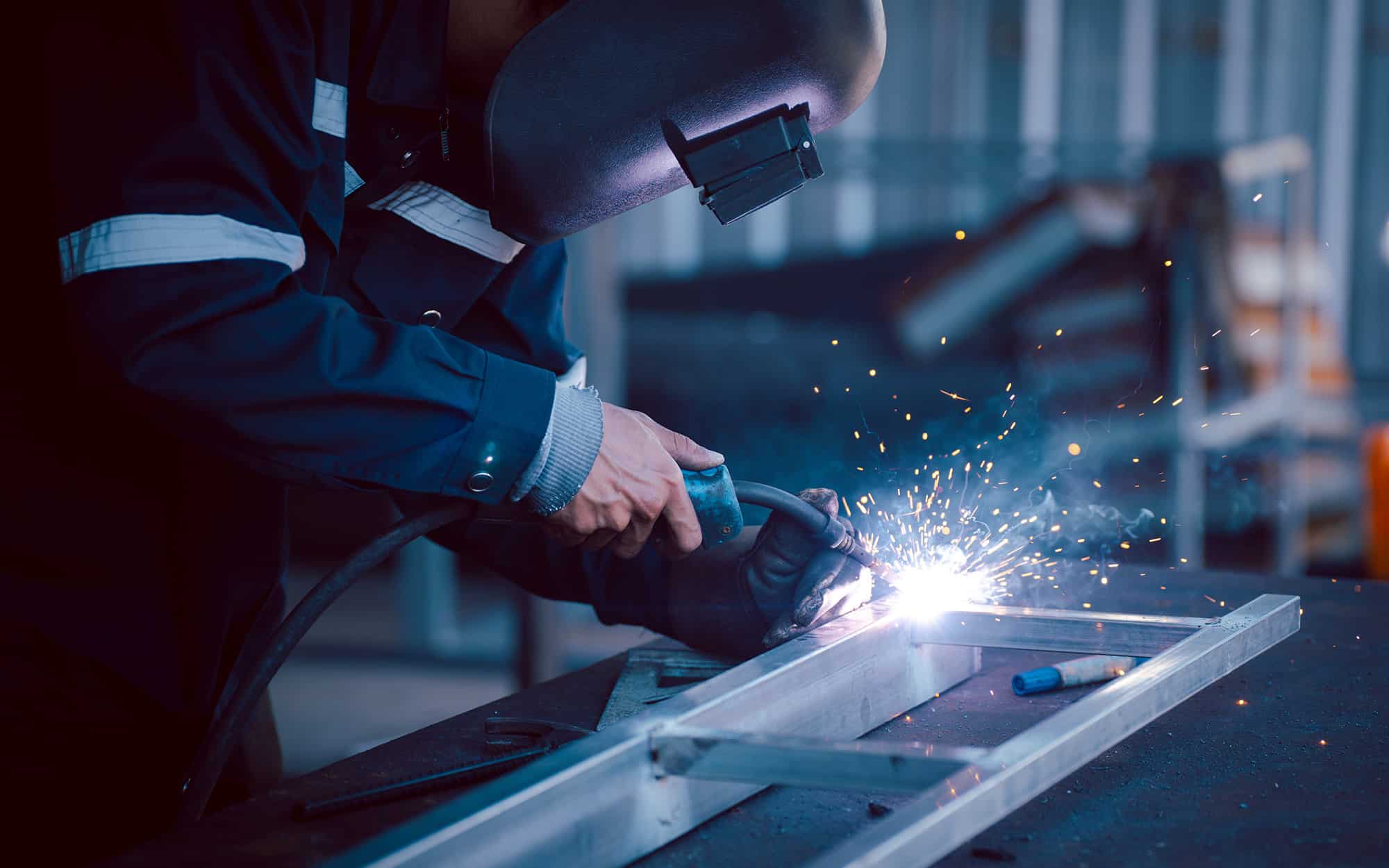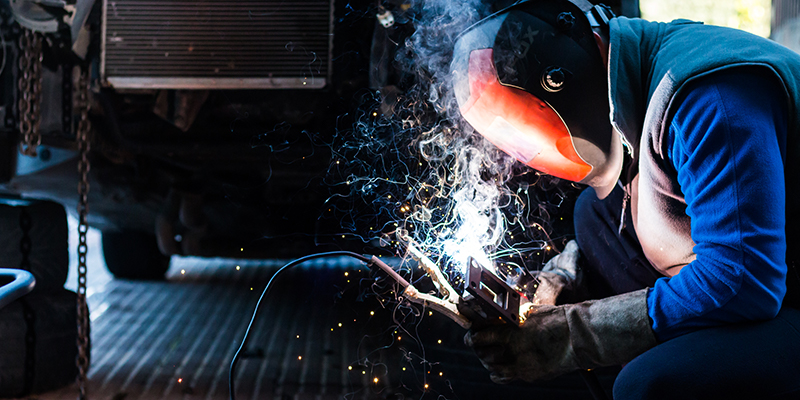Usual Welding Repair Issues and How to Address Them Effectively
Welding fixings commonly come across a series of issues that can jeopardize the stability of the end product. Usual troubles include inadequate infiltration, porosity, and misalignment, among others. Each flaw provides special obstacles that call for specific strategies for resolution. Understanding these concerns is important for welders aiming to improve their results and skills. This discussion will certainly check out these usual welding repair concerns and effective methods to resolve them.
Poor Penetration
Poor penetration happens when the weld metal fails to completely fuse with the base product, resulting in weak joints and prospective structural failures. This issue usually originates from insufficient heat input, wrong electrode angle, or incorrect welding speed. Welders may experience poor infiltration as a result of a miscalculation of the essential parameters for a details material density or kind. Additionally, contamination on the base product's surface can prevent efficient bonding, worsening the trouble. To address inadequate infiltration, welders ought to assure proper settings on their equipment and maintain a clean work surface area. Normal assessment of welds is recommended to determine any shortages early, enabling prompt adjustments and the prevention of endangered architectural stability in bonded settings up.
Porosity
Porosity is an usual defect in bonded joints that shows up as tiny gas bubbles trapped within the weld steel. This issue can compromise the honesty of the weld, leading to lowered stamina and prospective failing under stress. Fabrication. Porosity commonly arises from contamination, wetness, or incorrect welding methods, which allow gases to get away right into the liquified weld pool. To address porosity, welders need to guarantee correct surface area prep work, maintain a clean workplace, and utilize appropriate welding specifications. Additionally, selecting the best filler product and securing gas can reduce gas entrapment. Normal assessment and testing of welds can aid recognize porosity early, ensuring timely corrective activities are taken, consequently protecting the high quality and integrity of the bonded structure
Misalignment
Imbalance in welding can develop from different variables, consisting of inappropriate configuration and thermal growth. Comprehending the origin triggers is important for reliable resolution. A number of correction methods are readily available to straighten components and guarantee structural honesty.
Sources of Imbalance
Welding misalignment often originates from a range of underlying concerns that can compromise structural honesty. One key cause is improper fit-up of elements before welding, which can bring about spaces and irregular surfaces. Variations in thermal growth throughout the welding process can likewise result in distortion, especially if the materials being signed up with have different coefficients of expansion. Additionally, poor securing and fixturing might stop working to hold components safely in position, leading to motion throughout welding. Badly maintained devices, including welding equipments and tools, might introduce disparities in the weld bead, additional adding to misalignment. Driver mistake, stemming from inadequate training or experience, can also play a substantial function in developing misaligned welds.

Modification Methods Readily Available
Resolving imbalance properly requires a mix of restorative techniques tailored to the particular problems at hand. One common method is making use of fixtures or jigs to hold elements in the right setting throughout welding, guaranteeing regular alignment. In addition, preheating the materials can help in reducing distortion and improve fit-up. For considerable imbalance, mechanical adjustment methods, such as utilizing hydraulic jacks or clamps, can be employed to correct the placement before welding. Post-weld warm treatment might also be required to ease stress and anxieties brought on by imbalance. Finally, cautious inspection and change throughout the configuration phase can avoid imbalance issues from becoming significant issues, advertising a smoother welding procedure and boosting total architectural honesty.
Distortion
Distortion is an usual difficulty in welding that can arise from different variables, including irregular home heating and air conditioning. Understanding the causes of distortion is crucial for applying effective prevention methods. Addressing this issue not only enhances structural stability yet additionally boosts the overall high quality of the weld.
Causes of Distortion
When based on the intense heat of welding, materials often go through adjustments that can result in distortion. This phenomenon primarily develops from thermal growth and contraction during the welding process. As the weld location heats up, the material increases; upon air conditioning, it gets, which can create inner anxieties. Additionally, uneven home heating across a work surface can aggravate these stress and anxieties, causing bending or flexing. The kind of product also plays a substantial duty; metals with varying thermal conductivity and coefficients of growth might react differently, resulting in unpredictable distortions. Inadequate joint design and insufficient fixturing can add to misalignment throughout welding, enhancing the possibility of distortion. Understanding these causes is crucial for reliable welding repair and prevention approaches.
Prevention Techniques
Efficient avoidance strategies for distortion during welding focus on managing warmth input and guaranteeing appropriate joint layout. Maintaining a constant heat input assists to decrease thermal expansion and tightening, which can cause distortion. Making use of techniques such as preheating the work surface can additionally decrease the temperature gradient, promoting consistent heating. In addition, picking ideal joint styles, such as T-joints or lap joints, can boost security and minimize stress and anxiety concentrations. Applying correct fixturing to protect the workpieces in area better help in keeping placement throughout the welding process. Ultimately, staggered welding series can distribute warm a lot more equally, stopping local distortion. By using these methods, welders can substantially reduce the chance of distortion and boost the overall high quality of their website their welds.
Splitting
Splitting is a common issue come across in welding repair work, often resulting from various elements such as inappropriate air conditioning rates, product selection, or inadequate joint preparation. The event of cracks can considerably jeopardize the stability of the weld, bring about potential failings throughout operation. To address this concern, welders should first analyze the origin, making sure that materials work and properly chosen for the certain application. Furthermore, regulating the air conditioning rate throughout the welding procedure is essential; fast cooling can induce tension and result in fracturing. Appropriate joint style and prep work also add to lessening the risk. Executing these approaches can boost weld quality and resilience, eventually decreasing the likelihood of cracking in completed weldments.

Incomplete Blend
A substantial concern in welding fixings is insufficient fusion, which happens when the weld metal does not sufficiently bond click over here now with the base product or previous weld passes - Montana Mobile Welding and Repair Belgrade Welding. This flaw can bring about weak points in the joint, possibly compromising the honesty of the welded framework. Aspects adding to insufficient combination include insufficient warm input, inappropriate welding technique, and contamination of the surface areas being signed up with. To resolve this issue properly, welders need to ensure correct pre-weld cleansing and surface prep work, along with adjust their welding specifications to attain appropriate penetration and fusion. Routine assessment throughout the welding process can likewise assist determine insufficient fusion early, allowing for timely restorative steps to boost the overall top quality of the weld
Overheating
While welding fixings can boost architectural integrity, overheating presents a considerable obstacle that can result in material deterioration. Too much warmth throughout welding can alter the mechanical homes of steels, causing reduced strength, increased brittleness, and warping. This sensation is especially important in high-stress applications where structural integrity is vital. Recognizing getting too hot can include visual examinations for discoloration or distortion, along with checking temperature level throughout the welding process. To mitigate the risks related to getting too hot, welders ought to utilize ideal methods, such as controlling warm input, changing traveling rate, and making use of appropriate filler products. In addition, carrying out pre- and post-weld warmth therapies can aid recover product buildings and enhance the overall top quality of the repair work, guaranteeing long-term efficiency and safety and security.
Regularly Asked Questions
What Are the Usual Indications of a Welding Flaw?

How Can I Evaluate My Welds for High quality?
To check welds for top quality, one can make use of visual examinations, ultrasonic testing, and radiographic methods. Each method guarantees architectural integrity, determines issues, and validates adherence to defined requirements, eventually improving the dependability of the bonded joints.
What Safety and security Safety Measures Should I Take While Welding?
When welding, one must prioritize safety and security by wearing ideal individual protective equipment, guaranteeing proper ventilation, protecting combustible products away, keeping a clean work space, and recognizing environments to avoid crashes and injuries.
Can I Repair a Weld Without Redoing the Entire Joint?
Fixing a weld without redoing the entire joint is possible, depending on the damages (Montana Mobile Welding and Repair Belgrade). Techniques such as grinding, including filler product, or utilizing a welding procedure can successfully resolve particular imperfections while maintaining the bordering structure
What Tools Are Essential for Effective Welding Repair Works?
Necessary devices for efficient welding repair work consist of a welding maker, wire brush, grinder, safety equipment, clamps, and filler products. Each device plays a crucial duty in guaranteeing top quality and safety and security during the repair procedure. Porosity generally emerges from contamination, site here wetness, or inappropriate welding methods, which permit gases to escape right into the molten weld swimming pool. Inadequately conserved devices, including welding devices and devices, might present incongruities in the weld bead, more contributing to misalignment. When subjected to the intense warm of welding, products typically go through adjustments that can lead to distortion. Splitting is a common problem come across in welding fixings, usually resulting from various aspects such as improper air conditioning rates, material selection, or insufficient joint preparation. A considerable problem in welding repair services is insufficient blend, which happens when the weld steel does not appropriately bond with the base product or previous weld passes.